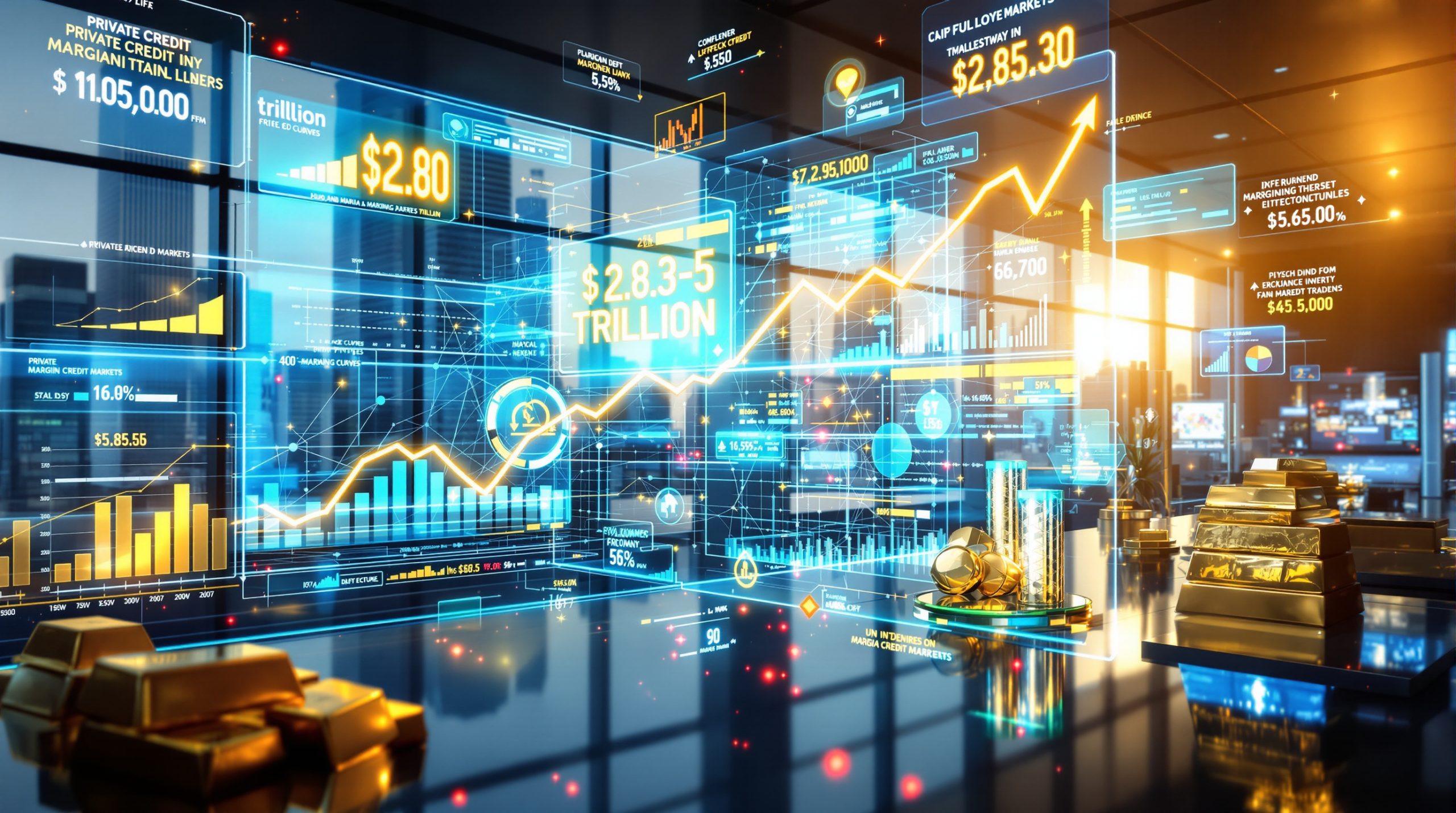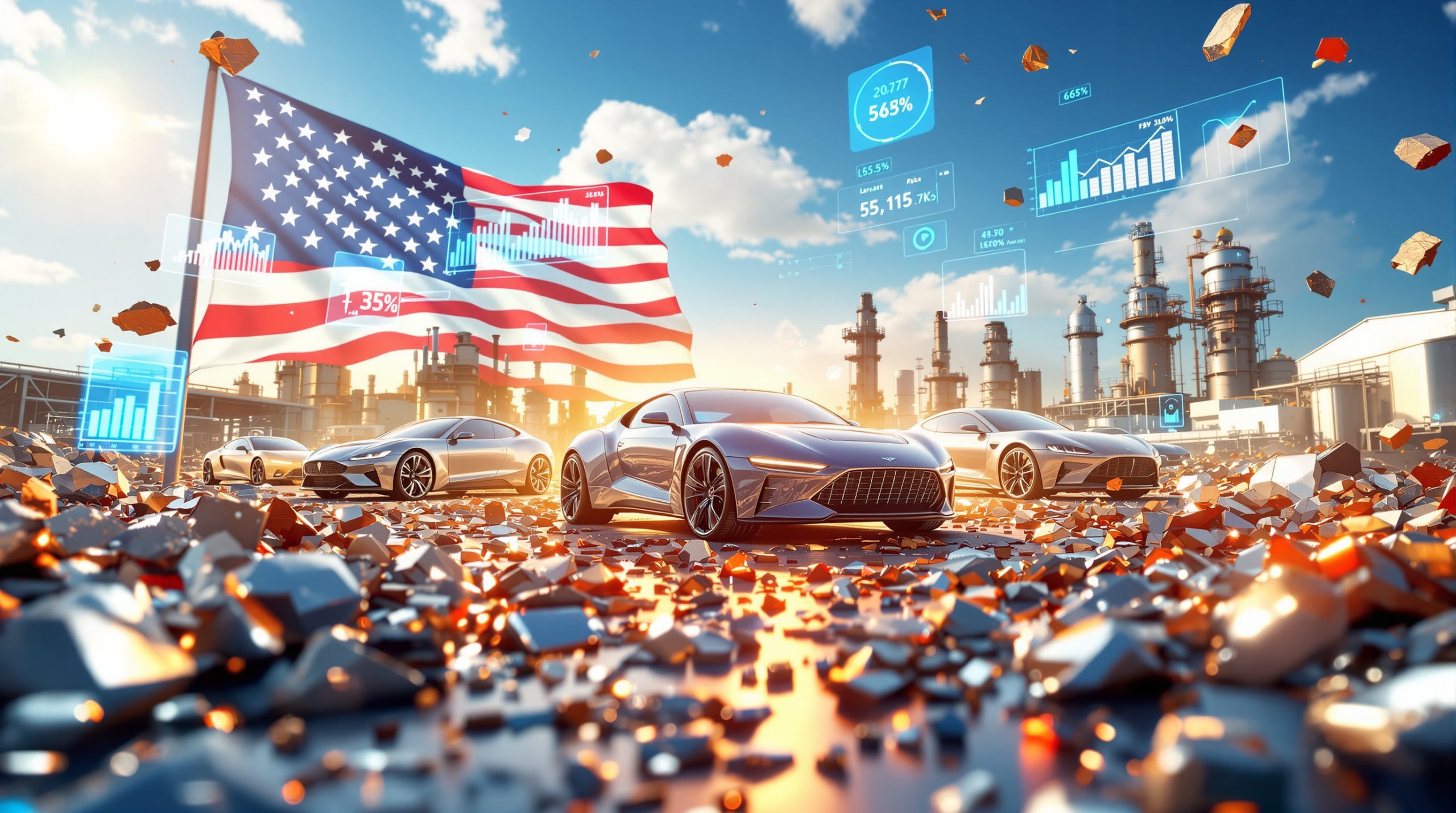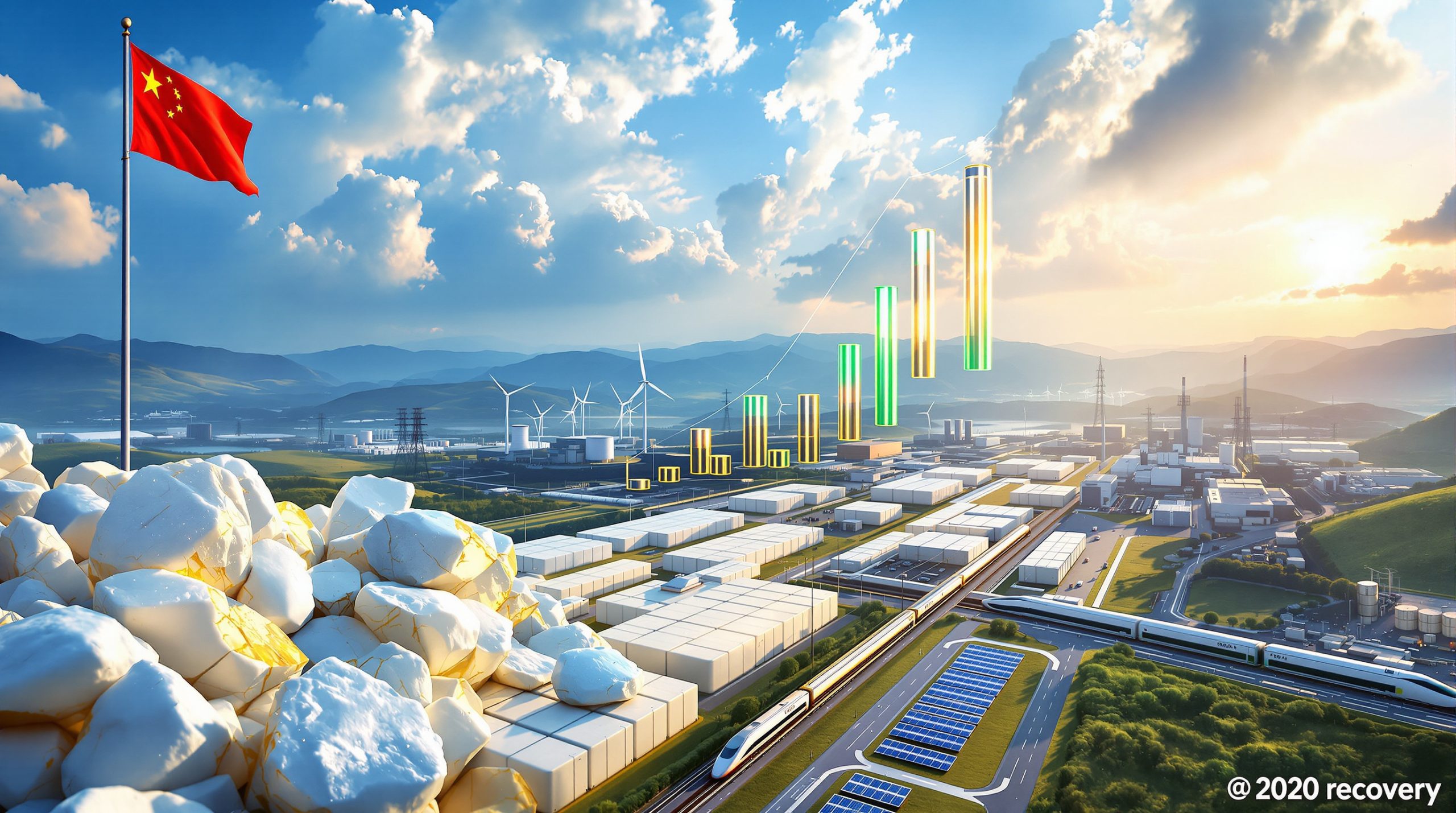How Will Euro Manganese Benefit from the EU Critical Raw Materials Act?
The EU Critical Raw Materials Act, enacted in 2024, represents a significant shift in Europe's approach to securing strategic minerals essential for its green transition. This landmark legislation aims to reduce the bloc's dangerous dependency on external suppliers, particularly China, by creating a fast-track pathway for resource development within EU borders. For Euro Manganese and its Chvaletice project, this legislation couldn't have come at a more opportune time.
The EU's Strategic Minerals Initiative
The Critical Raw Materials Act fundamentally transforms how mineral projects are approved within the European Union. For projects designated as "Strategic," permitting processes that previously took years can now be completed in months. This acceleration addresses one of the mining industry's most significant challenges in Europe—regulatory delays that have historically made resource development prohibitively time-consuming and expensive.
The legislation emerged from Europe's recognition of its vulnerability in critical minerals energy security. With battery manufacturing capacity expanding rapidly across the continent, securing reliable sources of battery materials has become an economic and national security imperative. China's dominance in processing critical minerals, particularly high-purity manganese, created uncomfortable dependencies that European policymakers are now actively working to reduce.
Manganese as a Critical Battery Material
Manganese might not generate the headlines that lithium or cobalt do, but its role in battery technology is becoming increasingly vital. The EU formally classified manganese (Element 25) as a strategic mineral due to several compelling factors:
- Essential for battery manufacturing: Manganese provides thermal stability in cathode formulations
- Limited European production: Currently no significant high-purity manganese production exists within EU borders
- Supply chain vulnerability: China dominates global high-purity manganese processing
- Growing demand: Market analysts project potential supply deficits by 2027
"High-purity manganese will be essential for Europe's EV transition, but the continent currently has no domestic production," notes Euro Manganese's latest investor presentation. This supply-demand dynamic creates significant investment opportunities for the first European producer to enter the market.
In March 2025, Euro Manganese's Chvaletice project received official Strategic Project designation under the Critical Raw Materials Act. This status confers several concrete advantages:
- Accelerated permitting through streamlined processes
- Priority consideration for EU funding mechanisms
- Enhanced visibility among European battery manufacturers
- Potential for expedited development timeline (targeting Final Investment Decision by 2027)
As Europe's only sizeable manganese resource, Chvaletice stands to benefit disproportionately from the EU's critical minerals push. The project's timeline acceleration may provide first-mover advantage in supplying the continent's rapidly expanding battery ecosystem.
How Does Chvaletice Stand Out as a Strategic EU Asset?
While several manganese projects exist globally, Chvaletice occupies a unique position both geographically and operationally. Located in the Czech Republic approximately 90km east of Prague, the project represents the only sizeable defined manganese resource within European Union borders.
Europe's Only Significant Manganese Resource
The Chvaletice project's strategic importance stems from its position as the sole European source of high-purity manganese. This gives Euro Manganese a potential monopoly on locally-produced material that meets the EU's increasingly stringent requirements for domestic sourcing. Battery manufacturers seeking to comply with upcoming European battery regulations will need materials produced within the region.
The Czech government recognized this significance by granting the project "Strategic Deposit" status in March 2025, aligning national priorities with EU objectives. This designation provides additional support at the country level, complementing the benefits received under the EU Critical Raw Materials Act.
A Recycling Operation, Not Traditional Mining
Perhaps Chvaletice's most distinctive feature is that it isn't a traditional mining operation at all. The project involves reprocessing tailings (waste material) from a historical manganese mine that ceased operations in 1975. These tailings contain approximately 7.33 million tonnes of manganese, creating a ready-made resource that doesn't require conventional mining.
This recycling approach delivers multiple advantages:
- Environmental remediation: Removes historical waste material from the landscape
- Lower impact: Avoids new land disturbance associated with traditional mining
- Reduced carbon footprint: Eliminates energy-intensive blasting and crushing
- Circular economy alignment: Transforms waste into high-value products
- Regulatory advantages: Fits perfectly with EU sustainability mandates
The tailings reprocessing model also addresses one of the mining industry's biggest challenges in Europe—public opposition to new extraction projects. By positioning Chvaletice as an environmental cleanup initiative that produces critical battery materials, Euro Manganese creates a compelling narrative that aligns with European values.
"We're not mining—we're recycling," explained Euro Manganese in their 2025 corporate presentation. "This distinction resonates strongly with European stakeholders focused on sustainability."
What Makes the Economics of Chvaletice Compelling?
While strategic positioning is important, investment decisions ultimately hinge on financial viability. The 2022 Feasibility Study for Chvaletice revealed robust economics that distinguish it from many development-stage mining projects.
Premium Products vs. Standard Manganese
The most striking aspect of Chvaletice's economics involves the extraordinary price premium for its planned products. The project will produce two high-purity manganese products:
- High Purity Manganese Sulphate Monohydrate (HPMSM): Priced at approximately US$4,000 per tonne
- High Purity Electrolytic Manganese Metal (HPEMM): Commanding around US$10,000 per tonne
These prices stand in stark contrast to standard manganese concentrate (38% Mn) used in steelmaking, which trades at roughly US$4.10 per tonne. This represents a stunning 1,000-2,500× price premium for battery-grade products versus conventional manganese.
The premium reflects the extensive processing required to achieve the 99.9% purity levels necessary for battery applications. Few facilities globally can produce these high-purity products, creating significant barriers to entry and helping maintain price stability.
The Financial Fundamentals
The 2022 Feasibility Study demonstrated compelling project economics:
- After-tax NPV: US$1.34 billion (using 8% discount rate)
- Internal Rate of Return: 22% (after tax)
- Project lifespan: 25 years of stable production
- Pre-production capital: US$757 million
These metrics compare favorably to many resource development projects, particularly the 22% IRR, which exceeds the hurdle rate for most mining investments. The 25-year production timeline also provides unusually long-term visibility, reducing risk for potential investors and customers.
Perhaps most intriguing is the valuation disconnect between the project's economics and Euro Manganese's current market capitalization. Despite the US$1.34 billion NPV demonstrated in the Feasibility Study, the company's market cap stands at approximately A$27 million—less than 2% of the project's net present value.
This valuation gap reflects both the pre-production status of the project and the significant funding still required. However, it also creates potential upside for investors if Euro Manganese successfully navigates the development pathway.
Why Is the Czech Republic an Ideal Location for Battery Materials?
Geographic positioning has become increasingly important for battery material suppliers as automotive manufacturers seek to reduce supply chain vulnerabilities and carbon footprints. The Czech Republic offers several strategic advantages that strengthen Chvaletice's market position.
Strategic Positioning in Europe's Battery Corridor
Chvaletice's location places it within direct reach of Europe's expanding battery manufacturing ecosystem:
- Tesla's Berlin-Brandenburg Gigafactory: Approximately 4-hour drive
- Volkswagen's Salzgitter battery hub: About 5-hour drive
- Access to over 30 planned European gigafactories by 2030
This proximity significantly reduces transportation costs and carbon emissions compared to importing high-purity manganese from Asia. As European automakers increasingly focus on reducing supply chain emissions (Scope 3), locally-sourced materials provide competitive advantages beyond mere logistics.
The project's central European location also enables efficient distribution to multiple customers, rather than being tied to a single nearby offtaker. This flexibility reduces counterparty risk and enhances negotiating position for offtake agreements.
Favorable Business Environment
Beyond geographic positioning, the Czech Republic offers a business-friendly regulatory environment that compares favorably to many EU countries:
- Economic freedom ranking: 20th globally (Heritage Foundation)
- Corporate tax rate: 23%
- Operating costs: Approximately 20% below neighboring Germany
- Political stability: Center-right administration under Prime Minister Petr Fiala (since 2021) maintains mining-friendly policies
The combination of EU membership (providing free movement of goods throughout the bloc) with relatively lower operating costs creates an attractive manufacturing proposition. This cost advantage could prove particularly important for maintaining margins in the competitive battery materials market.
The Czech government's support for the project, evidenced by the "Strategic Deposit" designation, also reduces political risk compared to jurisdictions where resource nationalism or shifting regulations have complicated mining developments.
How Is Manganese Transforming Battery Technology?
While investors often focus on more publicized battery metals like lithium, cobalt, and nickel, manganese's role in battery technology is increasingly significant. Understanding the technical trends driving manganese demand provides important context for evaluating Euro Manganese's market opportunity.
The Evolution of Battery Chemistries
Manganese has established itself as a key component in the cathodes of lithium-ion batteries, particularly in NMC (Nickel-Manganese-Cobalt) formulations that dominate the electric vehicle market. These cathodes are typically described with numbers indicating the ratio of metals—such as NMC 111 (equal parts nickel, manganese, and cobalt) or NMC 622 (60% nickel, 20% manganese, 20% cobalt).
Several factors make manganese particularly valuable in battery applications:
- Thermal stability: Manganese improves safety by raising the temperature at which batteries experience thermal runaway
- Cost efficiency: Constitutes only approximately 1% of total battery production costs
- Resource availability: More abundant than cobalt or nickel
- Processing simplicity: Less energy-intensive to process than some alternative metals
These advantages have made manganese a standard component in most EV battery formulations, with increasing prominence in newer chemistries.
Emerging Manganese-Rich Formulations
The battery industry's evolution is trending toward formulations with higher manganese content:
- Lithium Manganese-Rich (LMR): Developed by GM and LG, offering 33% higher energy density than LFP batteries
- Lithium Manganese Iron Phosphate (LMFP): Emerging alternative to standard LFP with improved energy density
- Lithium Manganese Nickel Oxide (LMNO): High-voltage cathode chemistry with reduced cobalt content
These developments align with the industry's effort to reduce dependence on problematic materials like cobalt, which costs approximately US$30,000 per tonne and faces serious ethical sourcing concerns due to its concentration in conflict-affected regions like the Democratic Republic of Congo.
"The trend toward manganese-rich cathodes represents a significant tailwind for high-purity manganese demand," noted a recent Euro Manganese investor presentation. "These newer chemistries require even more manganese per battery than traditional NMC formulations."
As these emerging technologies move from laboratories to production lines, the demand for high-purity manganese is expected to accelerate, potentially outpacing supply growth and creating favorable pricing dynamics.
What Progress Has Euro Manganese Made Toward Funding?
For pre-production resource companies, securing funding represents one of the most significant challenges. Euro Manganese has made notable progress on this front, though substantial work remains to fully finance the US$757 million pre-production capital requirement.
Current Financing Developments
Recent financing milestones include:
- A$12 million placement: Completed at C$0.18 (A$0.20) per share
- Notable investors: Includes prominent resource investor Eric Sprott and the European Bank for Reconstruction and Development (EBRD)
- Orion Resource Partners: Proposed US$100 million funding package in 2023
- Five executed offtake term sheets: Signed as of June 2025
- Demonstration plant: Commissioned to produce sample material for potential customers
The EBRD's involvement since late 2021 is particularly significant, as development banks typically conduct extensive due diligence and often provide a stamp of approval that can attract additional institutional investors. Their continued support through the recent placement suggests confidence in the project's viability.
The five executed offtake term sheets represent another important milestone. While these are not yet binding offtake agreements, they indicate serious commercial interest from potential customers. Converting these term sheets into binding contracts will likely be a prerequisite for securing project financing.
Path to Final Investment Decision
Euro Manganese has outlined a pathway toward a potential Final Investment Decision (FID) by 2027:
- Continued offtake agreement negotiations: 2025-2026
- Financing package completion: Targeted for 2026
- Final Investment Decision: Potentially by 2027
- Construction period: Approximately 2 years
- Production commencement: Possibly by 2029-2030
This timeline aligns with projected supply deficits in the high-purity manganese market, potentially allowing Euro Manganese to begin production as market conditions tighten. The Critical Raw Materials Act's accelerated permitting should help maintain this schedule, reducing a key source of potential delays.
The substantial gap between current funding and the total capital requirement highlights the importance of the next 12-24 months for the company. Successfully converting offtake term sheets into binding agreements will be crucial for securing the remainder of the necessary financing.
What Are the Environmental and Social Benefits?
Beyond economic considerations, Chvaletice's environmental and social attributes represent significant advantages in today's ESG-focused investment landscape. The project's unique recycling approach addresses several environmental concerns while supporting broader sustainability objectives.
Remediation Through Recycling
The tailings reprocessing model delivers multiple environmental benefits:
- Waste reduction: Removes approximately 27 million tonnes of historical mining waste
- Water quality improvement: Eliminates ongoing leaching of metals into groundwater
- Land reclamation: Returns rehabilitated land for community use
- Reduced footprint: Avoids the habitat disruption associated with conventional mining
- Lower emissions: Eliminates energy-intensive blasting and crushing required in traditional mining
These environmental attributes help position the project favorably with regulators, communities, and ESG-focused investors. In Europe's stringent regulatory environment, these advantages can significantly reduce permitting risks and timeline uncertainties.
Furthermore, the project represents an excellent example of mine reclamation innovation that transforms environmental liabilities into economic assets. The effective mining waste management approach demonstrates how historical mining sites can be repurposed to support the clean energy transition.
Ethical Supply Chain Advantages
Beyond site-specific environmental benefits, Chvaletice supports broader ethical supply chain objectives:
- Cobalt reduction: Enabling manganese-rich battery chemistries that reduce dependence on cobalt from conflict regions
- Supply chain transparency: Creating fully traceable European material flows
- Carbon reduction: Supporting EU climate goals through EV adoption
- Circular economy: Exemplifying principles of material reuse and waste minimization
For European battery and automobile manufacturers facing increasingly stringent supply chain regulations, these ethical advantages provide additional incentives to secure offtake from the project. The EU Battery Regulation's requirements for carbon footprint disclosure and ethical sourcing create natural alignment between Chvaletice and European customers.
"Our recycling approach resonates strongly with European OEMs focused on supply chain sustainability," noted Euro Manganese in recent investor communications. "We're not just selling manganese—we're selling a solution to their ESG compliance challenges."
The project also aligns with Europe's growing focus on developing efficient battery recycling processes to reduce dependence on imported materials. This circular economy approach creates a compelling narrative for stakeholders across the EU.
FAQs About Euro Manganese and the EU Critical Raw Materials Act
What makes Euro Manganese different from traditional mining companies?
Unlike conventional mining operations that extract new resources from the ground, Euro Manganese focuses on recycling historical tailings from the Chvaletice mine that closed in 1975. This approach transforms waste material into high-value battery products while avoiding many environmental impacts associated with traditional mining. The project remeditates historical pollution while producing critical materials for Europe's battery supply chain.
How does the EU Critical Raw Materials Act benefit Euro Manganese specifically?
The Act provides Euro Manganese with accelerated permitting processes, reducing approval timelines from years to months. It also grants priority consideration for EU funding mechanisms and enhances visibility among European battery manufacturers. As the owner of the only sizeable manganese resource in the EU, the company is uniquely positioned to benefit from Europe's strategic minerals initiative and the Act's focus on securing domestic supply chains.
What are the main risks associated with the Chvaletice project?
Looking to Invest in Critical Battery Minerals?
Discover how Europe's shift towards strategic mineral security is creating compelling investment opportunities with Discovery Alert's proprietary Discovery IQ model, which analyses ASX-listed companies positioned to benefit from critical raw materials demand. Visit our discoveries page to learn how mineral discoveries can deliver exceptional returns and start your 30-day free trial today.




